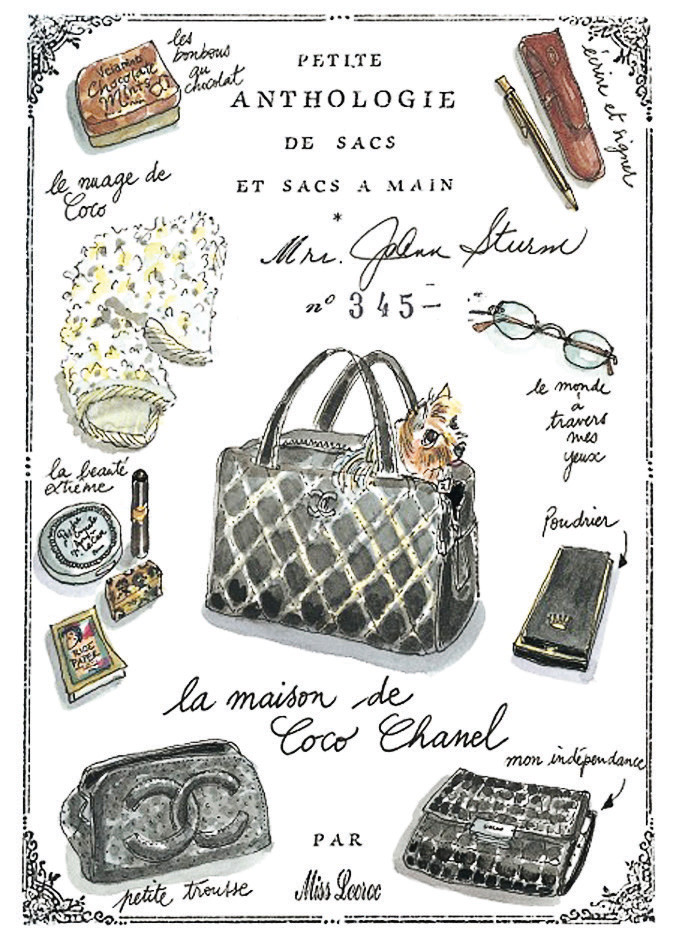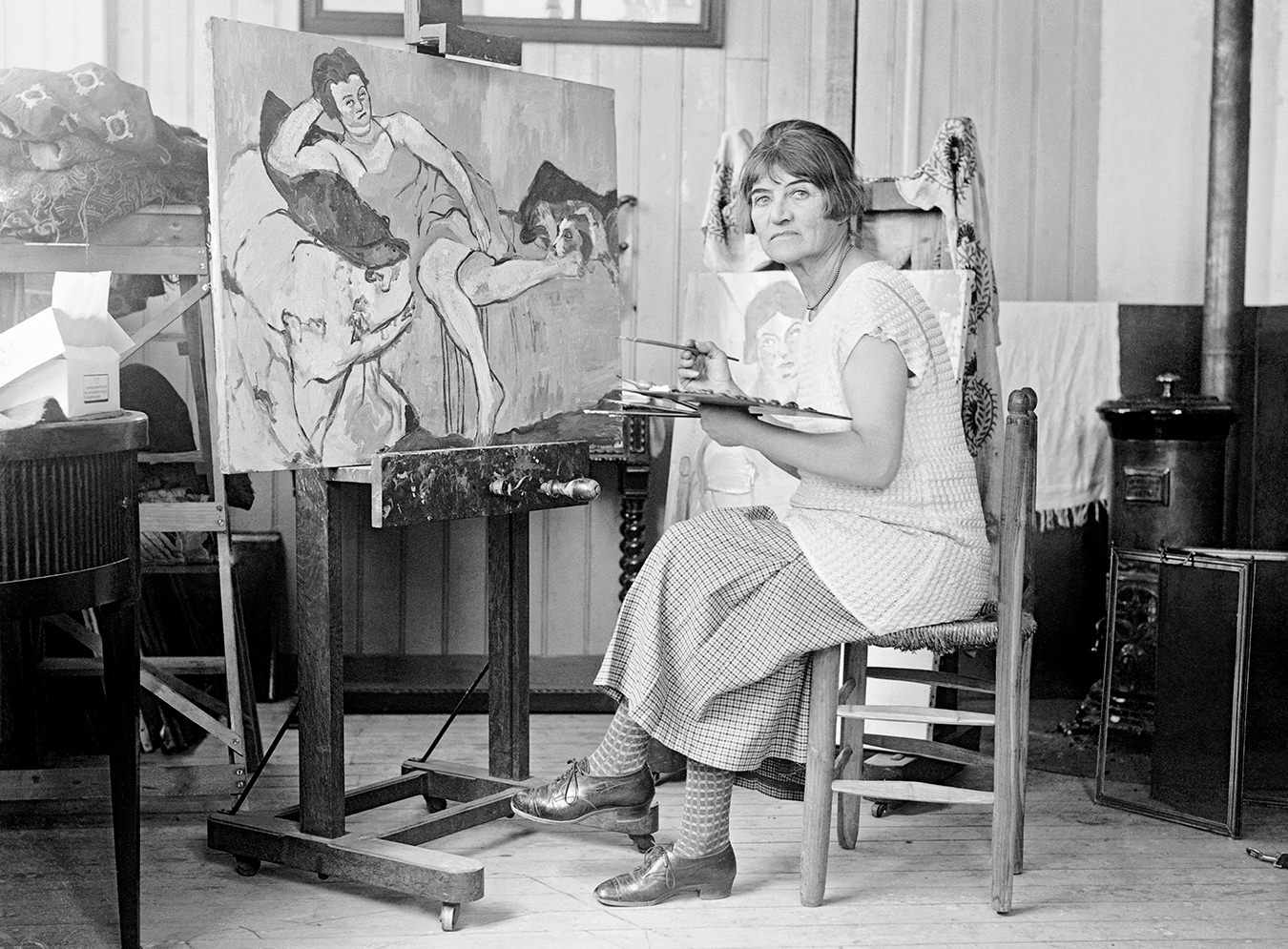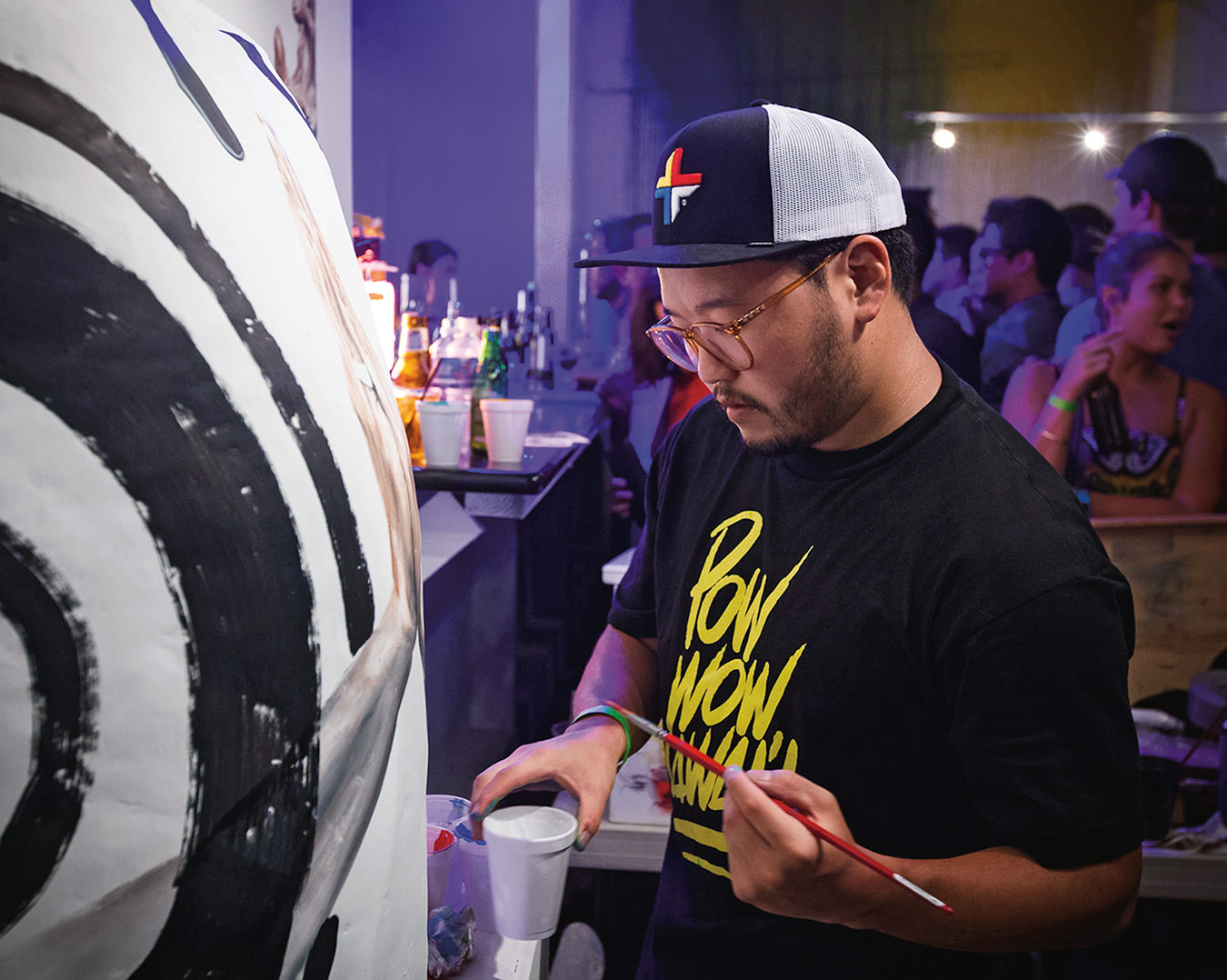-
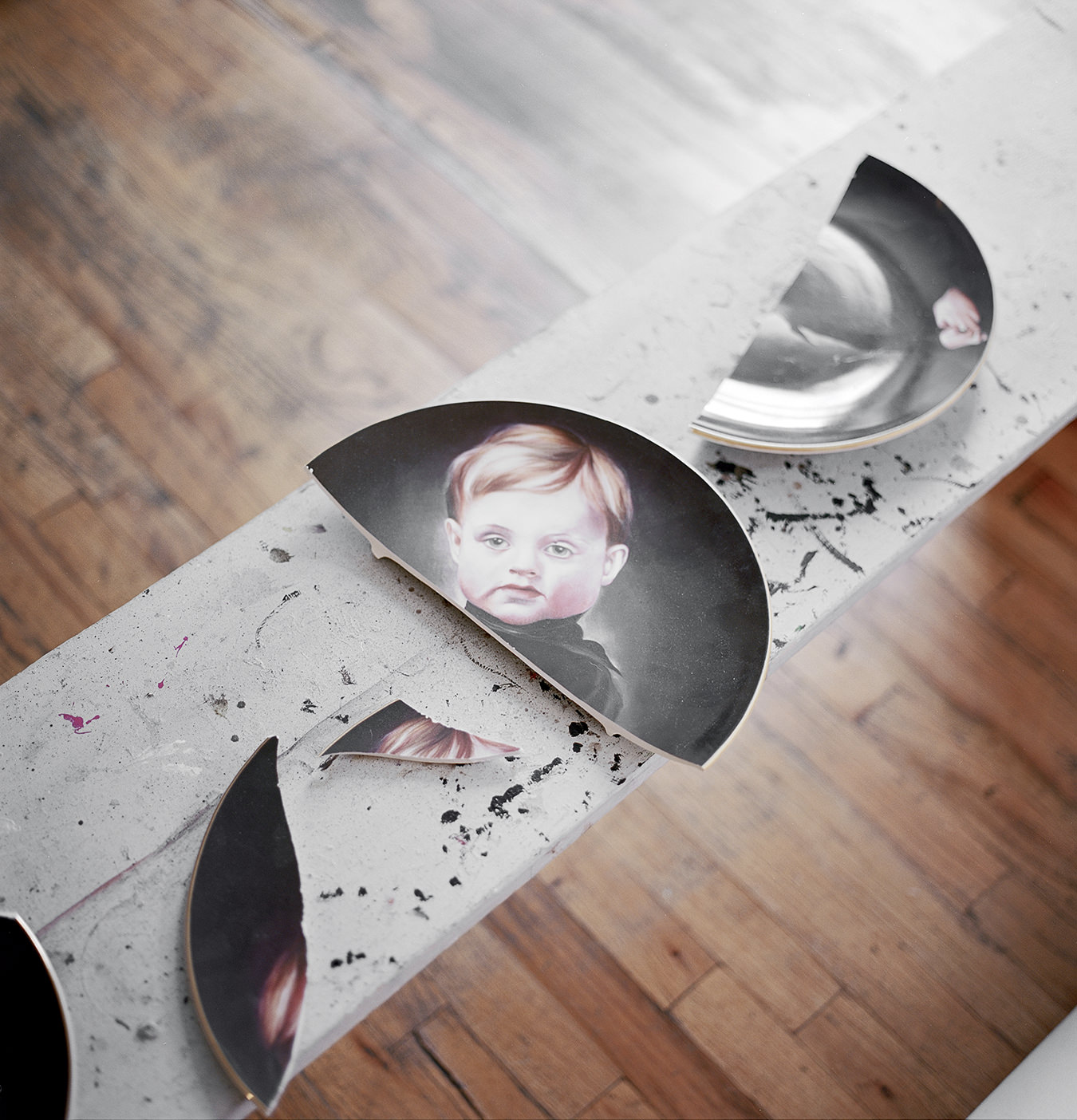
-
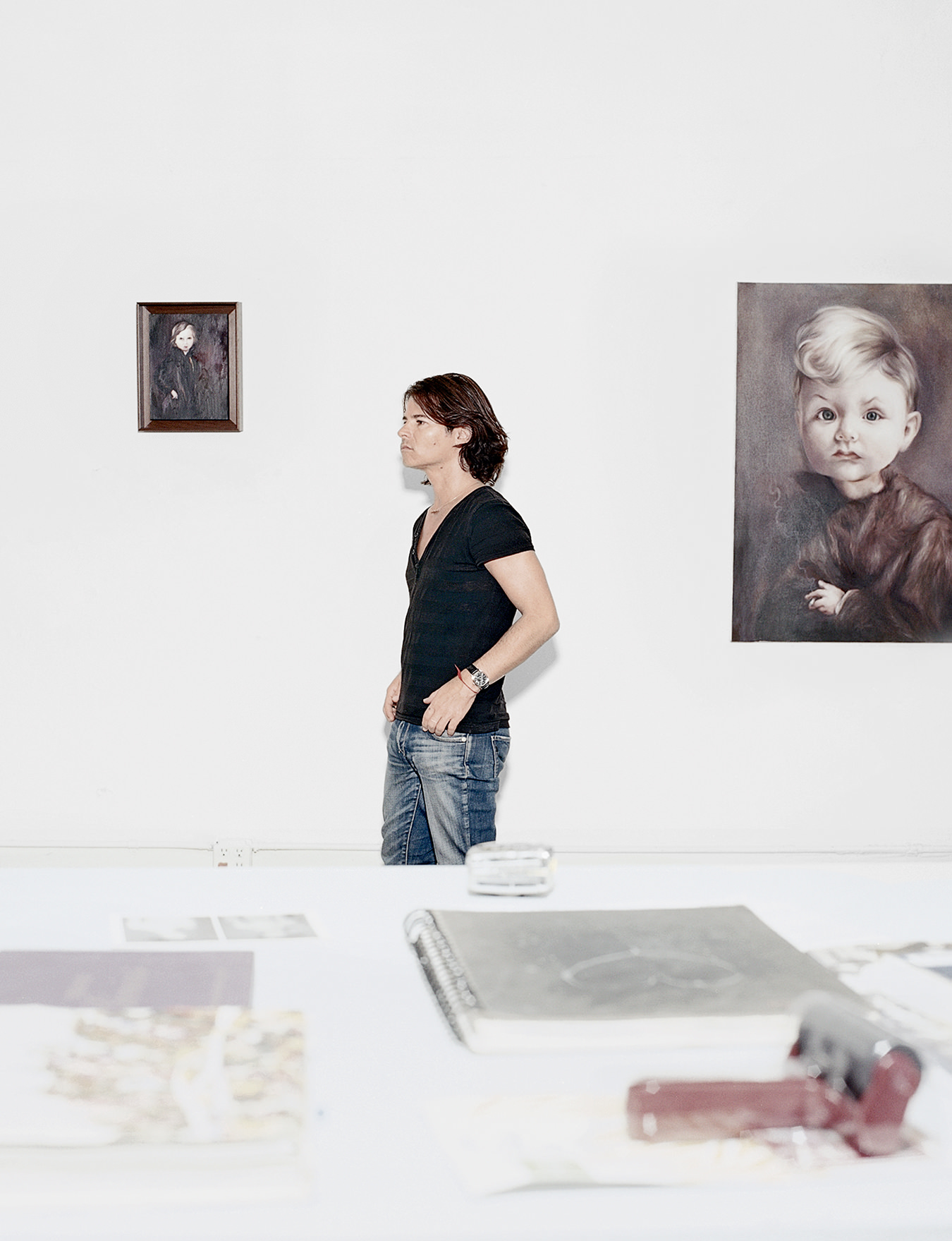
Nir Hod at his studio in New York’s Meatpacking District with his “Genius” works looking on.
-

A work from the artist’s “Soldiers” series.
-
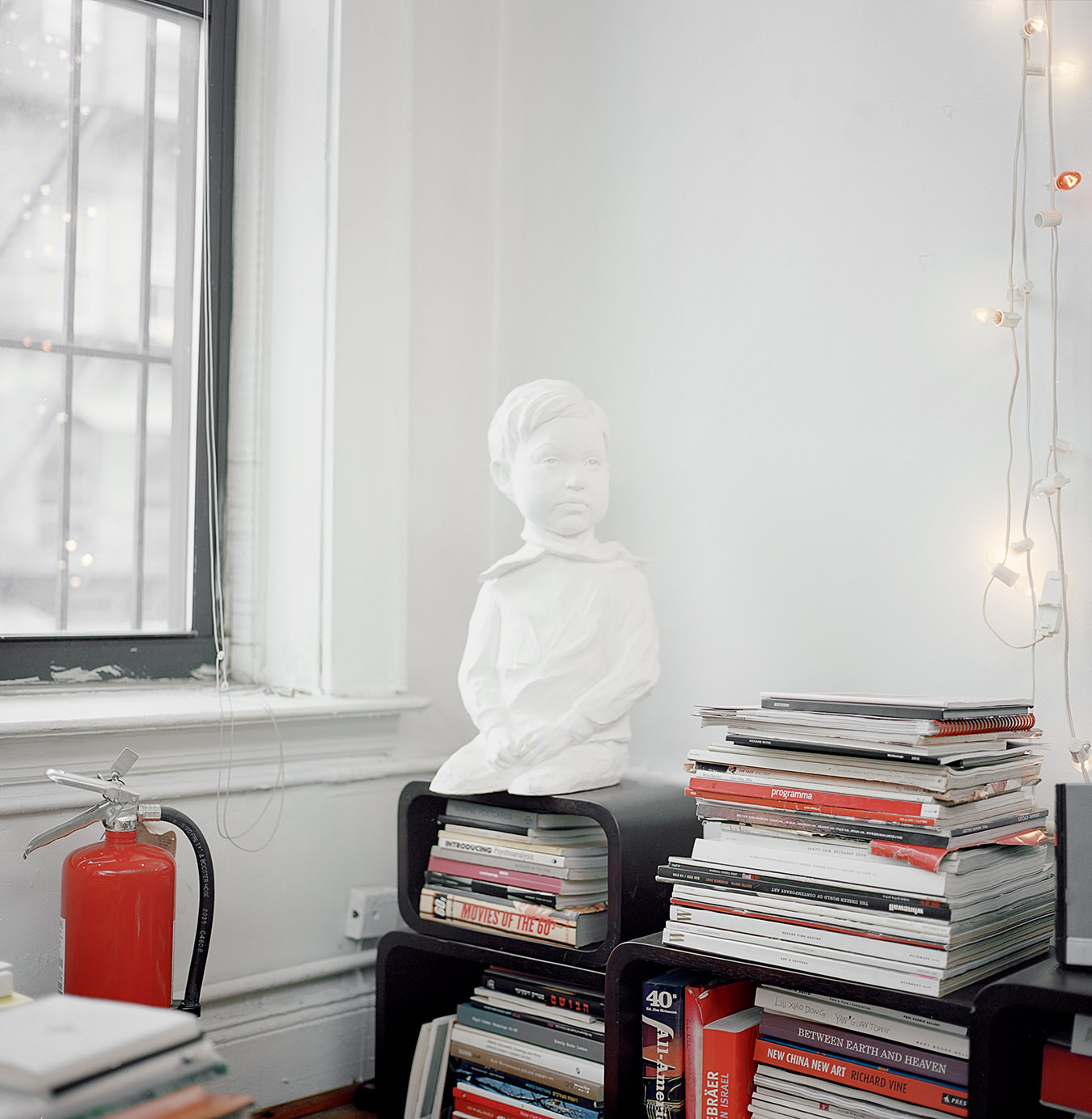
A sculpture from Hod’s “Genius” series.
-
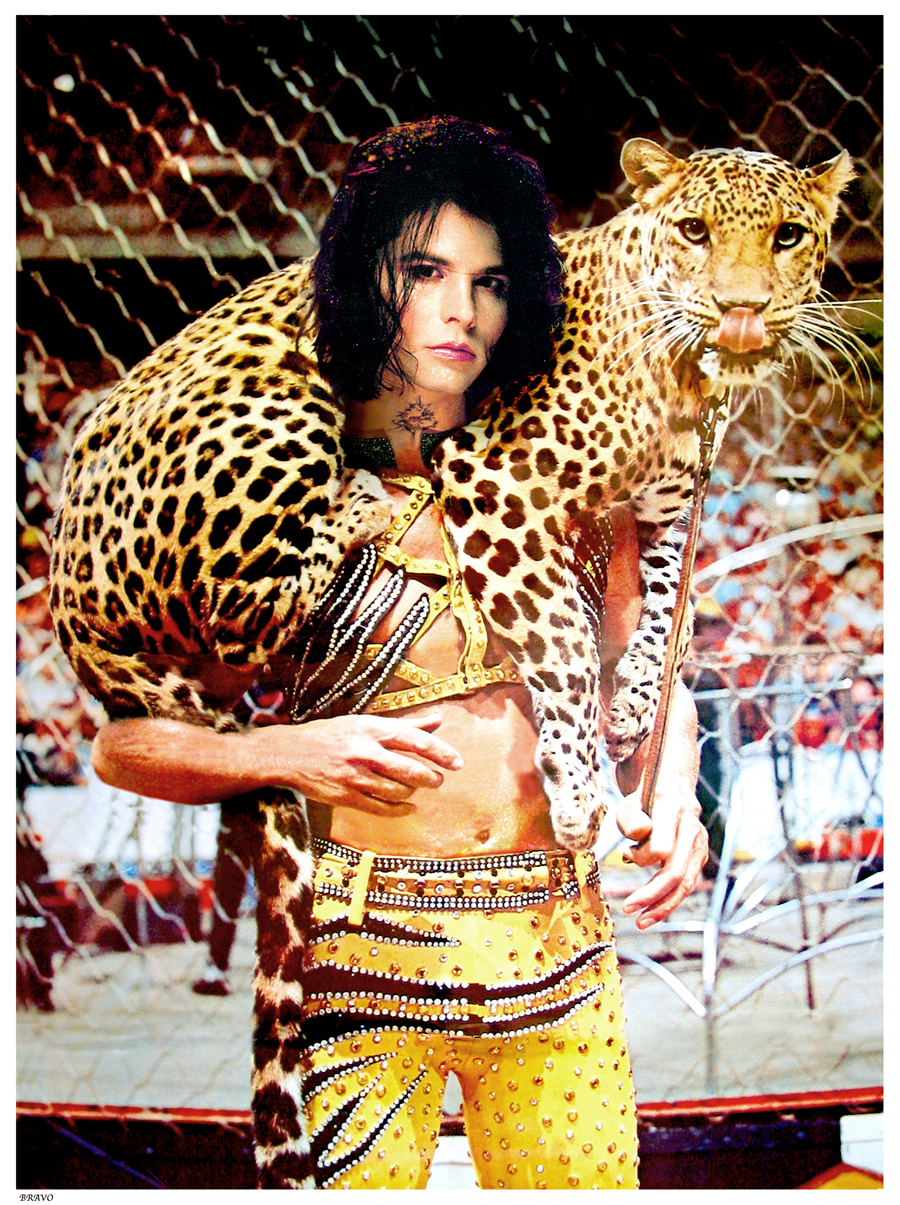
Bravo, 2004, digital print.
-

Who killed the Bambi, 1997, wax, wood, and oil paint.
-
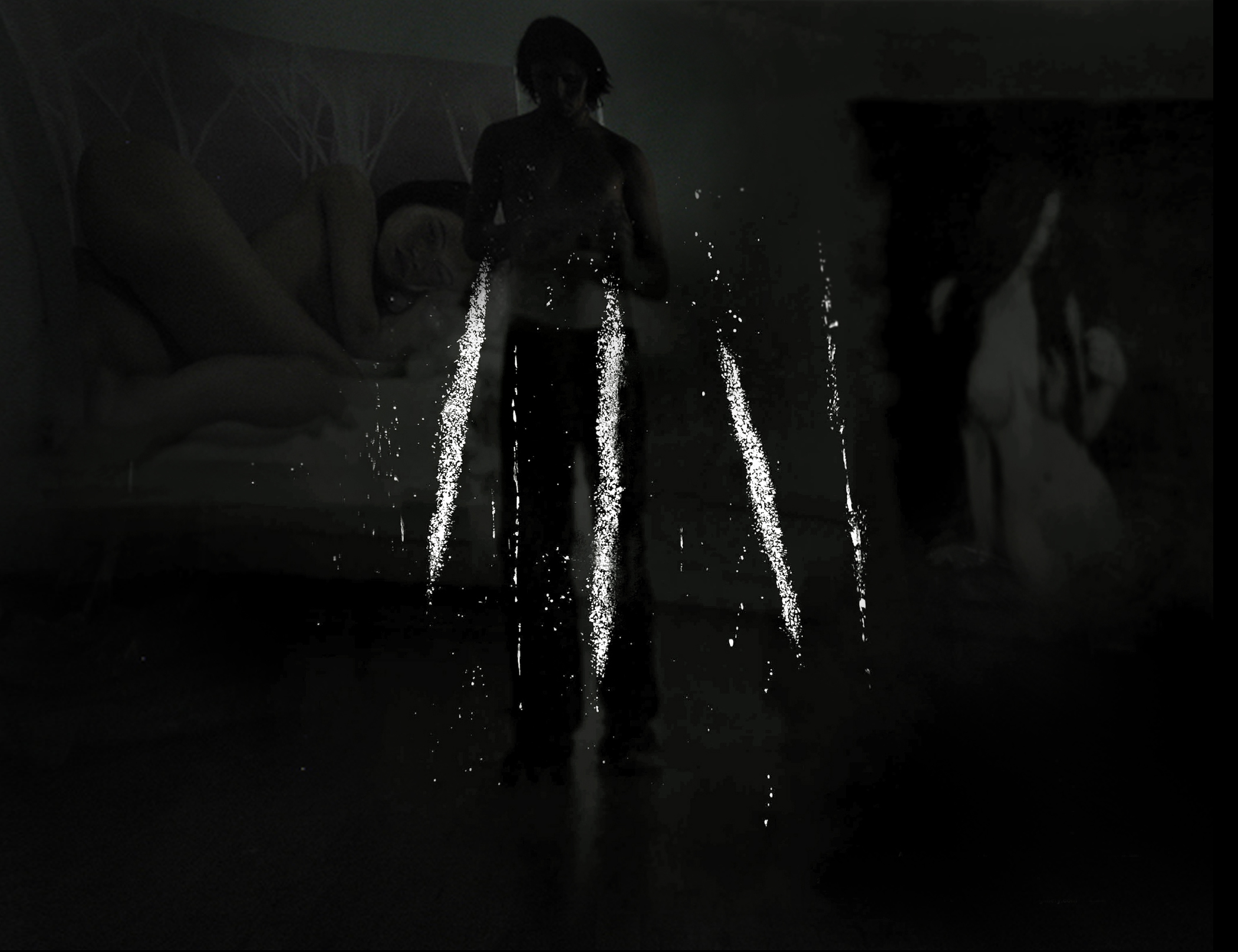
The Night You Left, 2007, oil on black mirror.
-
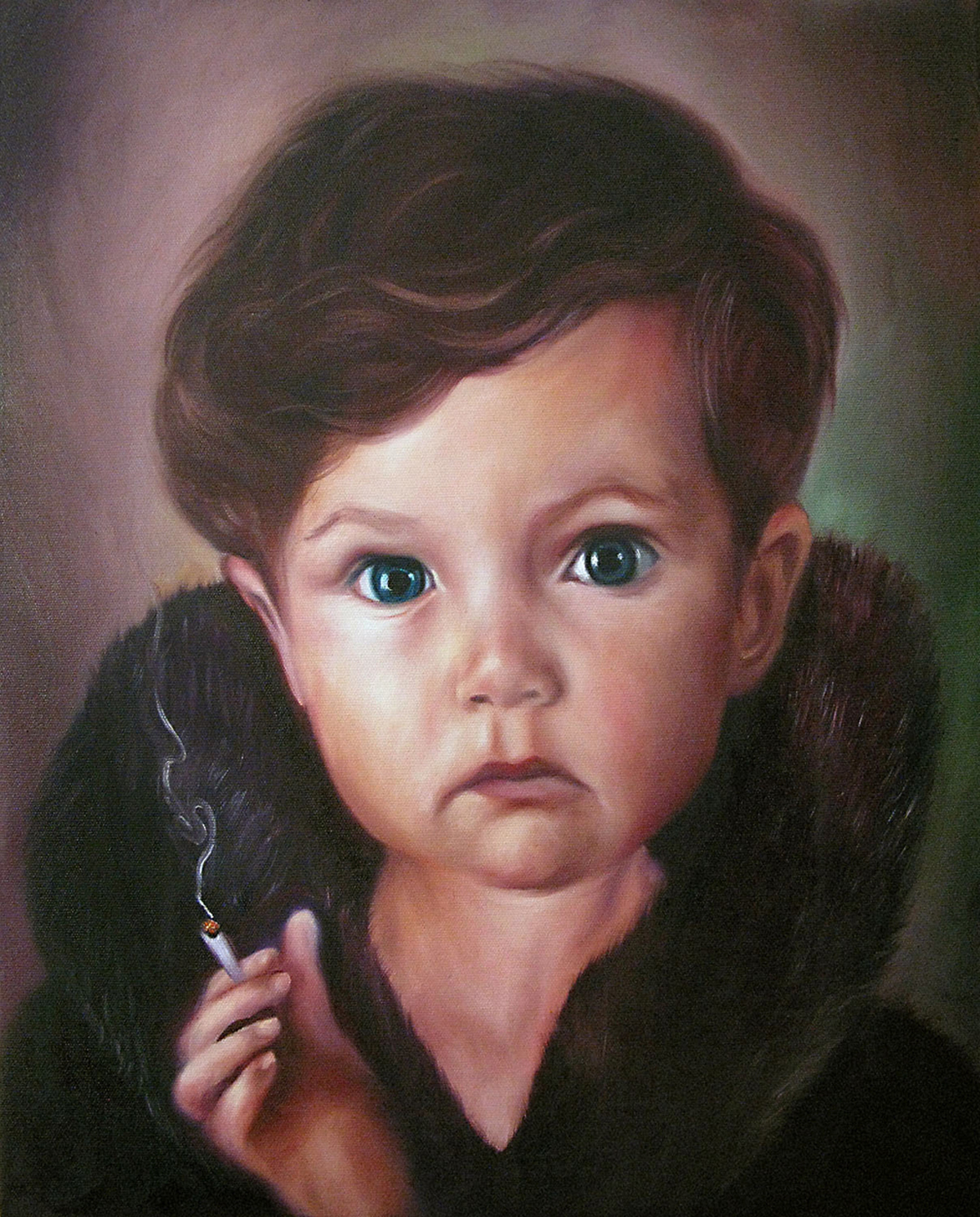
Genius Otto, 2010, oil on canvas.
-
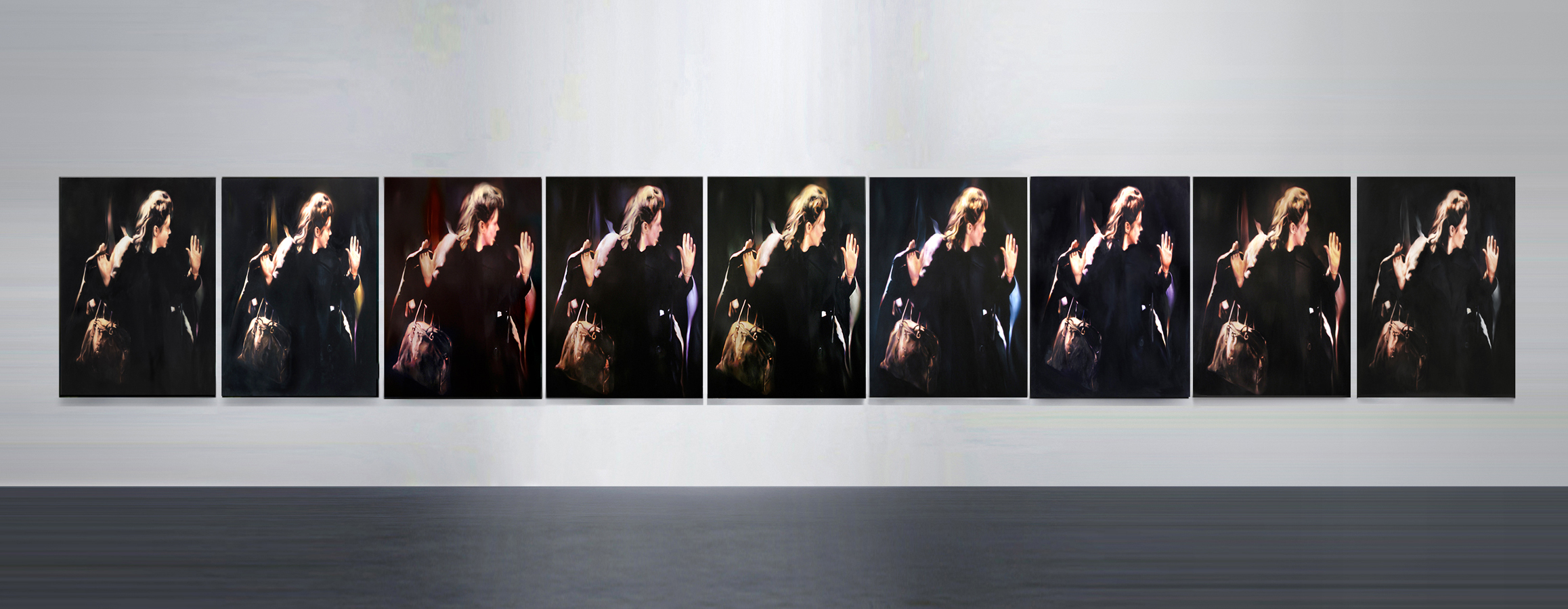
Mother, installation view.
-
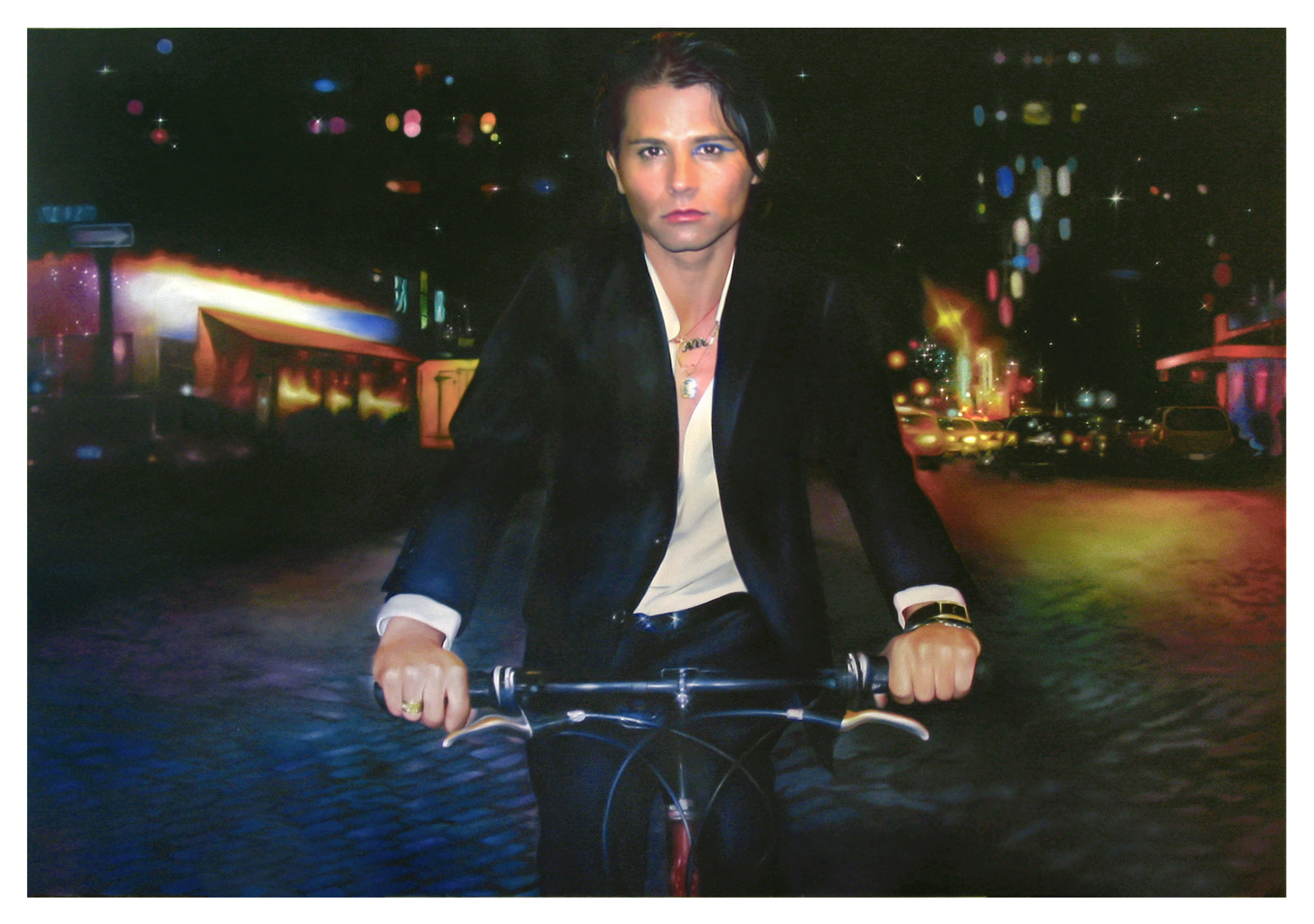
It’s My Time, 2004, oil and glitters on canvas.
-

I LOVE, 2006, oil on canvas.
-
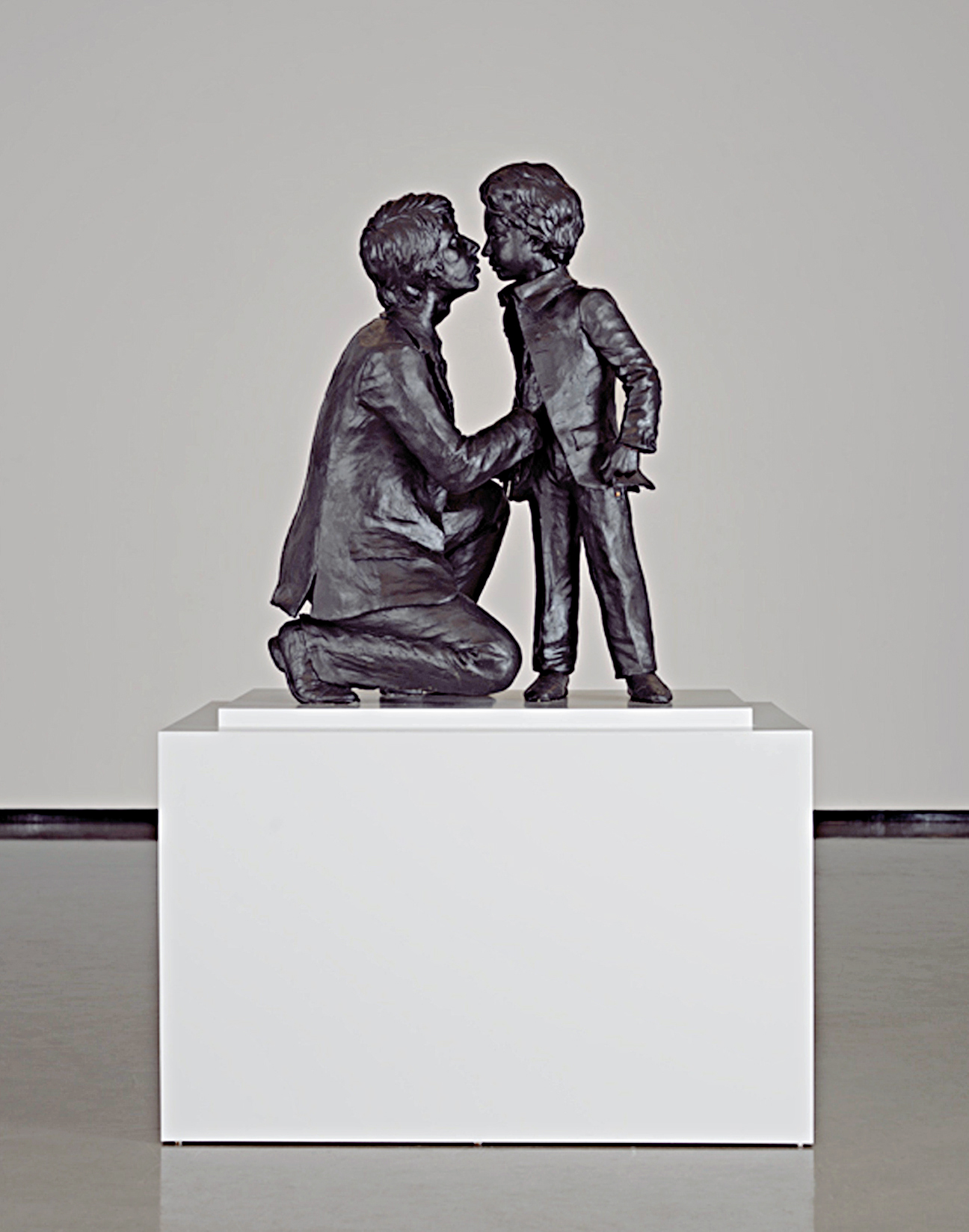
Father and Son, 2011, paint, epoxy.
Nir Hod
Eyes wide open.
If a pair of magic glasses was invented that could correct the way we see the world, Nir Hod would approve. “Everybody’s got their eyes open, but most people don’t look to the right places,” says the Israeli-born, New York–based artist, who is at his Meatpacking District studio working on a new (yet to be titled) show (yet to be confirmed debut date). “I believe that we have to do some kind of correction to society—this is the way to develop. One of the options is to correct familiar things, to give them a twist, and create them in a new light, with new meaning.”
Hod might be right. How often do we find ourselves on a crowded subway or city pavement, head down, mind buried in thought (or in a smart phone), while possible soulmates—or even just moments of human connection—pass us by? How often do we look at a painting or watch a movie and focus only on the main attraction, the star of the show, when perhaps the part that could be the most meaningful (at least, in the context of personal interpretation) is hidden quietly in a corner that our eyes just miss.
It’s appropriate, then, that Hod’s studio is easy to miss when walking down the street. The door number is discreet, and you’re just not expecting one of the little doors on a block otherwise occupied by posh boutiques, warehouses, and loading docks to house not one, but many geniuses.
“Genius” is a series of paintings exploring beauty, loneliness, and narcissism (three of Hod’s favourite subjects), depicting precocious children—little “geniuses” —who have the self-possession and scornful expressions of adults. Some are even smoking cigarettes. (Interestingly, though, “their narcissism is more a sign of internal happiness than of vanity,” wrote philosopher Roy Brand.)
“I always look at it as a child who has his own interpretation. I always look at other things,” explains the 42-year-old artist, while a “Genius Nicolai” sculpture on the counter throws him a dirty look. (“Genius Nicolai” is a series of pink and gold chrome-plated tabletop cherubs created by Hod for PK Shop, the retail arm of Paul Kasmin Gallery, which also represents the artist in New York.) “I’m almost like a child looking with very romantic eyes at the world, and everything is larger than life—when you imagine kissing somebody for example, when you [actually] kiss, it’s not the same.”
Nir Hod adores paradox and contrast. That ethereal point where beauty and tragedy meet, as do life and death, love and fear, is a zone he strives to enter as often as possible. “I always search for this area that’s behind words,” he says.
Known for his videos, sculptures, and realist paintings that explore themes like beauty, loneliness, glamour, and death, Hod has garnered acclaim for not only the prodigious “Genius” but also his painting series “Mother” and objects that reinvent familiar narratives of contemporary pop culture and history (and, by consequence, invite the viewer to imagine new and improved narratives). Consider The Night You Left coasters. These gold, mirrored acrylic coasters are lined with digitally printed white powder that mimics lines of cocaine. (Like the “Genius” series, the coasters are an extension of Hod’s paintings of the same name.)
Some might think it’s about partying and decadence, but Hod sees the story differently and, in effect, “corrects” it: “For me, it’s not about these parties and Studio 54—it’s about loneliness and heartbreak. Like when you see snow falling and it’s so cold and everything becomes so beautiful. You know why? Because it’s the right combination of beauty and tragedy.”
Hod adores paradox and contrast. That ethereal point where beauty and tragedy meet, as do life and death, love and fear, is a zone he strives to enter as often as possible. “I always search for this area that’s behind words,” he says. “And it’s magic. The first time, the last time; black, white—the point at which these [extremes] meet, it’s this area that we say, ‘Wow, it’s beautiful.’ There’s just nothing else to say. It’s the most honest, the most human. I like to go into this area where it doesn’t really matter, you almost lose the way, you stop judging, and you’re in a twilight zone of new rules, where you don’t know what is right or wrong anymore. Once it’s beautiful, it’s beautiful, and it doesn’t really matter.”
Hod looks like a chic young bohemian jet-setter. Indeed, as evidenced by his early work, a glamorous, creative fantasy world has been a consistent part of his aesthetic. Hod didn’t set out wanting to be an artist. But after being kicked out of regular school, he decided he wanted to go to art school. Why? He was a surfer, and the art school was near the beach. “For one year, I didn’t even know how to hold the paintbrush,” he says, shaking his head. But when his class learned about the Renaissance, he was hooked. In 1993, he participated in a group show at a Tel Aviv wax museum for which he created a wax sculpture of himself. (He’s still fascinated with wax museums and the way they freeze a moment, capture youth.) People paid attention, and his career began.
He earned his BFA from the Bezalel Academy of Arts and Design in Jerusalem; Hod’s favourite subject during this time was himself. He painted himself as various characters, often as women. His 1995 painting The Soldiers features Hod as a female soldier. “It’s a very iconic image, but I showed it in a different way: camp, pop,” he recalls. “But it’s not about politics. I wanted to create new icons in Israeli culture. I was obsessed with icons especially, as an Israeli—military, powerful icons. My idea was not to murder them but to create them with a completely new look, context, and meaning.” Bursting with pop-culture references, his paintings, videos, and books built campy fantasy worlds. Hod’s playfully provocative artwork was unlike anything Israel had ever seen.
In his early days, Hod’s playfully provocative work was unlike anything Israel had ever seen. “I wanted to compete with friends who became rock stars or were in movies. They influenced people in such a beautiful way, and I said, ‘Art should be the same.’”
Of course, this was many years ago, and he’s gone on to have solo shows in New York, Berlin, Philadelphia, and Miami, and also at the Tel Aviv Museum of Art and many Israeli galleries. But at the time, “it was all Arte Povera, and the colour was, like, muddy green, the influence of the army and the uniform, brown. [So] if you talk about beauty, you’re considered shallow. If you talk about volume, art that influences people, they say art is elite. It was important for me to break that, because it wasn’t me. I came from something new and fresh, like MTV videos and new graphics. I wanted to compete with friends who became rock stars or were in movies. They influenced people in such a beautiful way, and I said, ‘Art should be the same.’ ”
How did Hod have the confidence to challenge the status quo? A strong parental relationship which, for him, is an important energy for people who create. “When you go to the dark areas, and you have this kind of love from your parents, you never get lost,” he says. “When you come from such a secure place, you have the ability to see something most people don’t even want to see. And it creates the desire to do something more spectacular, ’cause you really want to impress somebody.”
And Hod did delve deep into the dark side. In 2012, he showed 10 paintings in a New York solo exhibition called “Mother”. The paintings reference the famous 1943 Franz Konrad photograph of Nazi soldiers clearing out the Warsaw Ghetto. The “Mother” series presents a mysterious, anonymous woman in Konrad’s photograph in a completely new and “corrected” context, where her reality is different: she is removed from the horror of the Holocaust, and revered.
The inspiration came to him in a flash. “For myself, I feel it’s the most important body of work I did so far. To take something historical and familiar, and to be able to show it to people like it’s the first time they’re looking at it.” Hod first noticed the woman when he was working on “Genius”, while looking for archival material in which he could examine children’s expressions. “I looked at this photo because I wanted to see the expression of the child. But I didn’t see it. All I saw was this woman. My instinct was to call [the series] ‘Mother’. It gives it so much drama and pain because she’s not the mother of the child. And also, ‘Mother’ for me was a correction to this tragic picture. This woman was so powerful, so sad, that nobody really noticed her … it’s very powerful to open the eyes in these dark areas.”
At the moment, Hod is working on a gigantic bronze snow globe. The ambitious sculpture is “a huge production, but it’s going to be a spectacular object,” he says, not revealing much of the project. “Everything is handmade, and there’s 480 litres of oil inside.” Certainly, its gargantuan scale reinvents a familiar, kitschy object in a new way—and one containing its own frozen fantasy world, to boot. In Israel, snow was a rarity, so of course Hod was obsessed with the stuff. “I never really lived in a place with snow, but I wrote a lot about snow because I found it so beautiful. It was almost like love for the first time.” In 1997, he published a book of poems and photos called Forever that became a teen cult hit, in which he wrote a lot about snow. The idea, he says, was “like the most beautiful girl who died in the snow … something very seductive, but at the same time, untouchable, which creates a tension that’s never-ending.”
Of course, Hod is in a very different place today—literally. “When I first saw snow in New York, it was beautiful, but for a short time. It’s cold, and I really hate when it’s cold,” he confesses. “I hate the winter like you cannot even imagine. It’s a big problem for me.” Hod loves New York for many reasons, one of which is the constant bombardment of visual stimuli and inspiration, which has helped him put on his own figurative magic glasses and see things in a different, “corrected” way. “In New York, you have different kinds of images, and everything looks like a fashion production, so you lose your mind in a good way. You have the freedom and privilege to lose your mind.”


